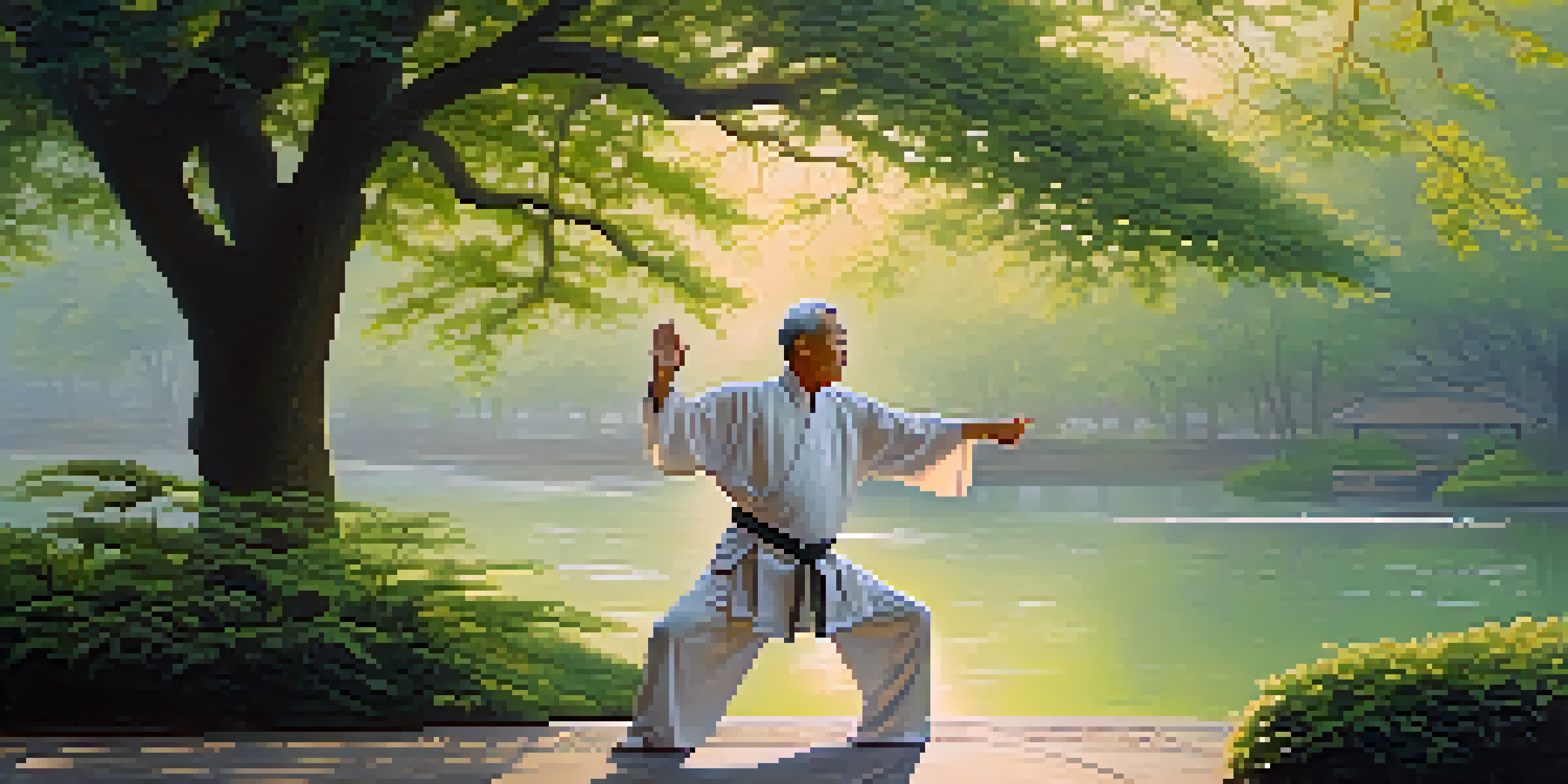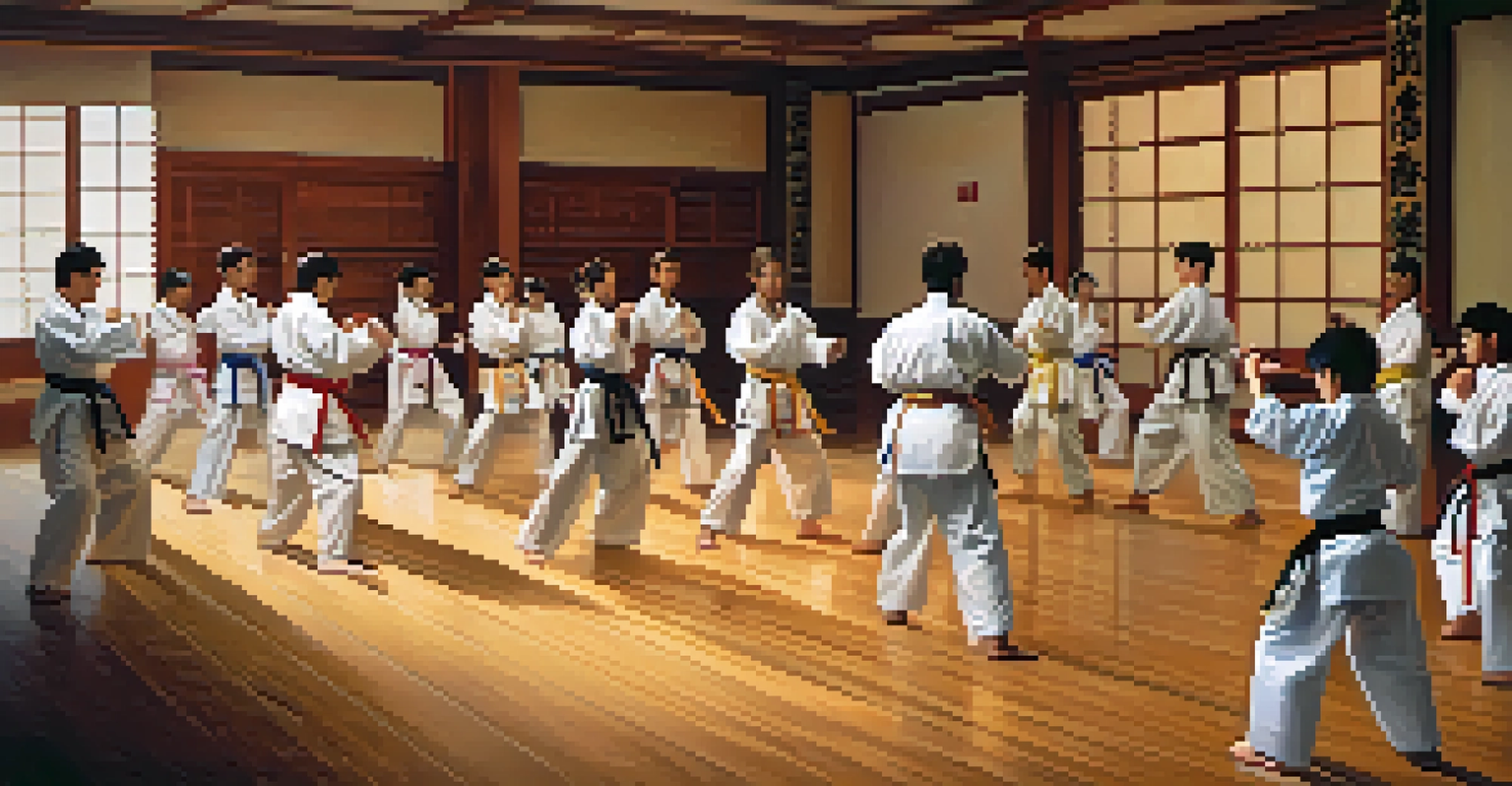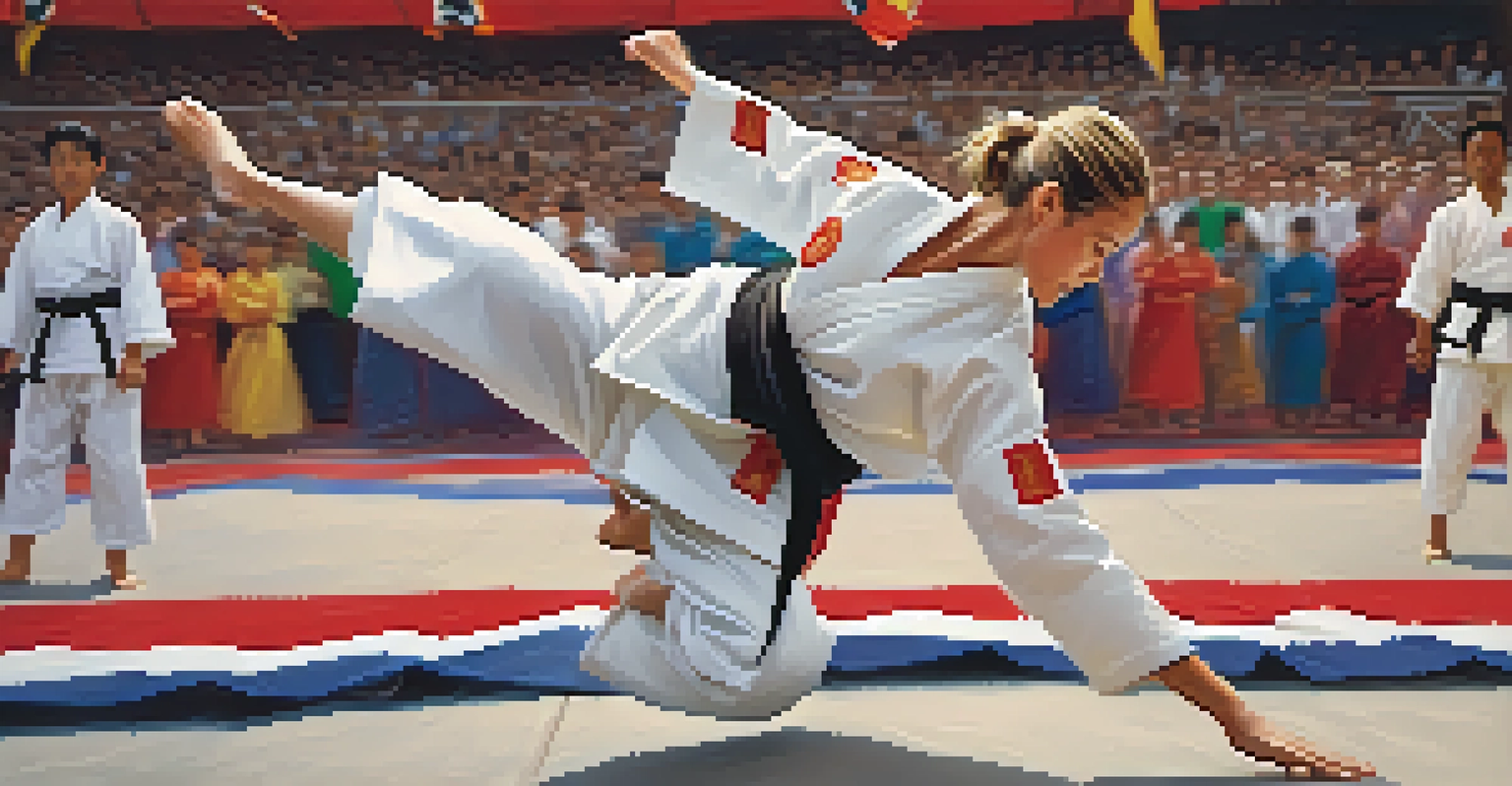Martial Arts in Asia: A Cultural and Historical Overview

The Origins of Martial Arts in Asia: A Deep Dive
Martial arts in Asia have roots that stretch back thousands of years, with each region developing unique styles based on cultural and historical contexts. For example, China's ancient military strategies laid the groundwork for various fighting techniques, while India's Kalaripayattu is considered one of the oldest martial arts, emphasizing agility and fluid movements. These origins reflect not just the physical aspects of combat but also philosophical teachings that advocate discipline and respect.
Martial arts are a means of self-discovery and personal growth, providing practitioners with skills that extend beyond physical combat.
As we explore the beginnings of martial arts, we can see how they were often tied to the social and political conditions of the time. The dynasties in China, for instance, influenced the evolution of styles like Tai Chi, which merges martial practice with meditation. Similarly, Japan's samurai culture gave rise to disciplines such as Kendo and Jujutsu, showcasing the connection between martial arts and societal values.
Related Resource
Ultimately, the origins of martial arts in Asia tell a compelling story of adaptation and evolution. They serve as cultural artifacts, embodying the history, philosophy, and spirit of the people who practice them. This rich heritage continues to inspire martial artists around the world today.
Key Martial Arts Styles and Their Cultural Significance
From Karate in Japan to Muay Thai in Thailand, each martial art carries its own cultural significance and unique techniques. Karate, for instance, emphasizes striking and has deep philosophical roots in Okinawan culture, while Muay Thai, known as the 'Art of Eight Limbs,' reflects Thailand's history and is often associated with national pride. The techniques and training methods not only prepare practitioners for combat but also instill values such as respect and perseverance.

In China, styles like Wing Chun and Shaolin Kung Fu are not just forms of self-defense; they are also expressions of cultural identity. Wing Chun is famous for its efficiency and close-combat techniques, while Shaolin Kung Fu is steeped in Buddhist philosophy and monastic traditions. Each of these martial arts tells a story, connecting practitioners to their heritage and offering a sense of belonging.
Cultural Roots of Martial Arts
Martial arts in Asia originated from unique cultural and historical contexts, reflecting the philosophies and values of their societies.
Understanding the cultural significance of these martial arts styles enhances our appreciation for them. They are not merely physical activities; they are living traditions that embody the history, values, and beliefs of the communities from which they originate.
Martial Arts and Philosophy: A Deep Connection
Martial arts in Asia are often intertwined with philosophical teachings, providing practitioners with more than just physical skills. For example, many Chinese martial arts incorporate elements of Taoism and Confucianism, emphasizing balance, harmony, and moral integrity. This philosophical approach encourages students to develop both their body and mind, fostering a holistic view of personal growth.
The ultimate aim of martial arts is not just to win fights, but to foster discipline, respect, and a deeper understanding of oneself.
In Japan, the concept of 'Bushido,' or the way of the warrior, shapes the practice of martial arts like Aikido and Judo. This code of conduct promotes virtues such as loyalty, honor, and respect for others, guiding practitioners in their everyday lives. The integration of these philosophies into martial arts training creates a deeper understanding of oneself and one's place in the world.
Related Resource
Ultimately, the connection between martial arts and philosophy highlights the profound impact these practices can have on individuals. They encourage introspection, discipline, and a sense of purpose, making martial arts much more than just a means of physical combat.
The Role of Martial Arts in Asian Societies Today
In modern Asia, martial arts continue to play a significant role in societal culture. They are celebrated not only as sports but also as avenues for personal development and community bonding. Schools and dojos across the continent teach martial arts to children and adults alike, fostering a sense of discipline and respect that transcends generations.
Participation in martial arts competitions, such as the Olympics or local tournaments, has further elevated their status. These events showcase the skill and artistry involved in disciplines like Taekwondo and Judo, drawing international attention and promoting cultural exchange. For many, these competitions are a source of national pride and unity.
Martial Arts as Personal Growth
Many martial arts incorporate philosophical teachings that promote personal development, discipline, and self-discovery.
Moreover, martial arts serve as a bridge between the past and present, allowing contemporary practitioners to connect with their heritage. They provide a sense of identity and continuity in a rapidly changing world, ensuring that the cultural significance of martial arts endures.
Martial Arts in Popular Culture: Global Influence
Martial arts have transcended their cultural origins to become a global phenomenon, largely due to their portrayal in films, television, and popular media. Iconic figures like Bruce Lee and Jackie Chan have not only popularized various martial arts styles but have also introduced audiences to the philosophies behind them. Their influence has inspired countless individuals to take up martial arts, leading to a surge in interest around the world.
Movies often depict martial arts as not just combat techniques but as pathways to self-discovery and personal growth. Films like 'The Karate Kid' and 'Crouching Tiger, Hidden Dragon' showcase the beauty and depth of martial arts, appealing to audiences far beyond Asia. This crossover has helped to dismantle stereotypes and foster a greater understanding of Asian cultures.
Related Resource
As martial arts continue to thrive in popular culture, they serve as a reminder of their rich history and the values they embody. This global influence not only promotes physical fitness but also encourages a deeper appreciation for the traditions and philosophies that shape martial arts as we know them today.
Women in Martial Arts: Breaking Barriers
The landscape of martial arts in Asia has seen significant changes, particularly regarding the inclusion of women. Historically, many martial arts were male-dominated, but today, women are emerging as powerful figures in the field. From professional fighters in mixed martial arts to champions in traditional disciplines, they are breaking barriers and challenging stereotypes.
Organizations and dojos are increasingly promoting female participation, creating safe spaces for women to train and compete. Initiatives aimed at empowering women through martial arts not only enhance self-defense skills but also promote confidence and resilience. This shift is reshaping perceptions of gender roles within martial arts.
Women Empowerment in Martial Arts
The inclusion of women in martial arts is reshaping perceptions and fostering a more inclusive environment within the community.
Moreover, female martial artists are not just competitors; they are also role models and advocates for change. Their contributions are helping to inspire the next generation of female practitioners, fostering a more inclusive environment in martial arts. This evolution reflects broader societal changes, emphasizing equality and empowerment in all areas of life.
The Future of Martial Arts in Asia: Trends and Innovations
As we look to the future, martial arts in Asia are evolving to meet the demands of a changing world. With advancements in technology, online training and virtual competitions are becoming more prevalent, making martial arts accessible to a wider audience. This shift not only allows for greater participation but also fosters a sense of community among practitioners across the globe.
Additionally, there is a growing emphasis on wellness and mental health within martial arts communities. Many practitioners are recognizing the importance of mindfulness and stress management, integrating practices like meditation and breathing exercises into their training routines. This holistic approach is attracting new students who seek both physical fitness and mental clarity.

The future of martial arts is bright, with continued innovation on the horizon. As martial arts adapt to new trends and societal needs, they will remain a vital part of Asian culture, fostering connections, discipline, and personal growth for generations to come.